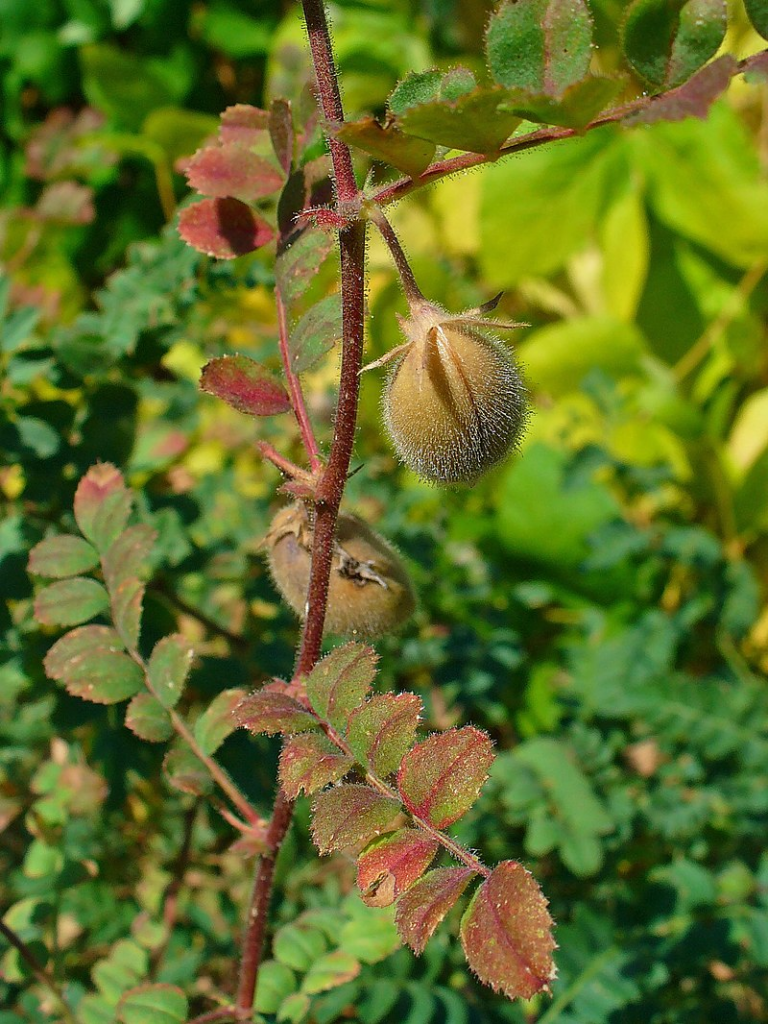
Also known as carbanzo bean, chickpea is an annual in the legume family, Fabaceae, that also include lupine, acacia, and scotch broom. It was domesticated about 7500 years ago and is probably native to southeastern Turkey, but spread to the Mediterranean area about 6000 BC. High in protein, chick peas were considered an important food source in the ancient world and were cooked into a broth or roasted as a snack. The Roman poet, Horace (died 8 BC) describes his delight at a simple meal including chickpeas in one of his satires and the Roman cookbook Apicius (5th century AD) gives several recipes for chickpeas. The ancient Roman naturalist, Pliny the Elder (died 79 AD) notes that chickpeas are valuable for use in treating such ailments as jaundice, gout, and urinary disfunction. Carbonized chickpeas were found in ancient Pompeii. Photo Credit H. Zell Wikipedia
Chickpea grows 8″-4′ tall and has a deep tap root, and branched or unbranched stems with small feathery leaves arranged alternately on either side. From spring to summer, white, pink, purple or blue pea-like flowers appear singly or in pairs and give way to hairy seed pods containing 1–4 cream, brown, green or black seeds, that we call chickpeas.
Size: 8″ -4′ tall
Light: Full sun
Soil: Fertile, evenly moist, well-drained
USDA Hardiness Zones: NA Annual